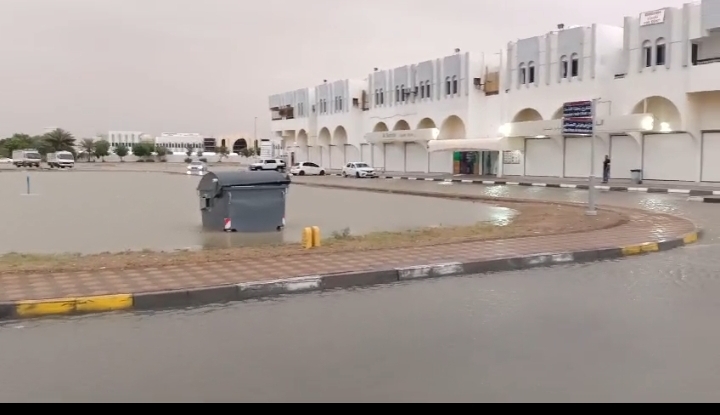Contents
Rainfall Start and Impact
Heavy rainfall in the UAE starting on March 20, 2024, with some areas receiving over 200 mm of rain in a 24-hour period. This extreme weather event caused disruptions, including the closure of Dubai International Airport and significant delays for motorists due to waterlogged streets.

Affected areas by rain in uae
The areas most affected by the recent heavy rainfall in the UAE include Abu Dhabi, Dubai, Sharjah, Ras Al Khaimah, Ajman, Al Ain, and Fujairah. In these areas, heavy rain, thunder, lightning, and hail were reported, causing localized flooding and disruptions. Roads leading to valleys and mountains were closed, and marine transport was suspended due to the severe weather conditions. Parks, beaches, and Global Village in Dubai were also closed, and football matches were postponed due to the unstable weather conditions.
Insurance Coverage for Weather Damage
Insurance policies in the UAE typically cover damages caused by rain to homes and vehicles, depending on the policy’s coverage and exclusions. Comprehensive policies that include damages from rain and natural disasters usually cover such damages. However, exclusions may exist for specific situations like force majeure events, making it essential for individuals to carefully read the fine print of their insurance policies.
Post-Rain Losses and Policies
After the heavy rainfall, residents have faced damages to vehicles and homes, with insurance claims being processed by firms. Settlement of claims can take weeks to months, depending on the extent of damages. It is advisable for residents to have home insurance to protect their assets and belongings.
Current Weather Conditions and Forecast
Currently, UAE residents can expect cloudy skies with rain in some parts of the country, leading to a drop in temperatures. The National Center of Meteorology (NCM) forecasts rain-bearing cloud formations over western areas like parts of Abu Dhabi, with temperatures gradually decreasing. Winds are expected to blow at speeds of 10 – 25 km/h, reaching up to 40 km/h at times, with the possibility of dust and sand reducing visibility in some areas. Showers are expected in eastern and southern areas, with further decreases in temperatures. Residents in eastern and northern areas like Fujairah, Ras Al Khaimah, and Sharjah may experience cloudy skies and rain in the coming days.
UAE Policies and Recommendations for Citizens
The UAE’s climate development scenarios paint a concerning future, with forecasts of extreme weather events like flooding, heatwaves, and sea level rise. To address climate change, the UAE has introduced initiatives like the Net Zero by 2050 Strategic Initiative, aiming to peak greenhouse gas emissions before 2025. Acting on climate change not only mitigates damages but also presents economic opportunities for the nation, with potential for significant growth through green technologies and renewable energy investments. By transitioning to a greener economy, the UAE can diversify its economy, build new sources of knowledge, and strengthen exports, ensuring a sustainable future for its citizens.
Frequently Asked Questions (FAQ) about Recent Rainfall in the UAE
Q: How much rain fell in Dubai during the recent storm?
A: In just one day, Dubai received 5.59 inches of rain, which is nearly double the amount the city typically sees in an entire year.
Q: What caused the heavy rainfall in the UAE and Oman?
A: The extreme rainfall was attributed to a series of low-pressure systems that brought severe thunderstorms and heavy rain to the region, leading to unprecedented flooding.
Q: How did the UAE government respond to the heavy rainfall?
A: The UAE government issued a stay-at-home advisory, ordered schools to operate online, and advised commuters to work from home due to the debilitating storms and flooding.
Q: Were there any casualties reported in Oman due to the storms?
A: Yes, at least 18 people died in Oman as a result of the severe weather, including 10 schoolchildren and an adult driver who were overtaken by floodwaters.
Q: Did the Dubai International Airport face disruptions during the heavy rainfall?
A: Yes, the Dubai International Airport suspended flights and experienced significant disruptions due to the storm, with water flowing onto taxiways and impacting operations.
Q: Is there a chance of more rain in the UAE following the recent storm?
A: The National Centre of Meteorology (NCM) has forecasted light to moderate rain in the UAE, with the weather situation expected to improve by Wednesday and temperatures dropping by five to seven degrees.

Safnaa has been working in the travel industry for over a decade, and her expertise and knowledge are reflected in the high-quality content and resources available on travelstutor.com. She is dedicated to providing travelers with accurate and up-to-date information on destinations, accommodations, transportation, and activities, ensuring that they have the best possible travel experience.





